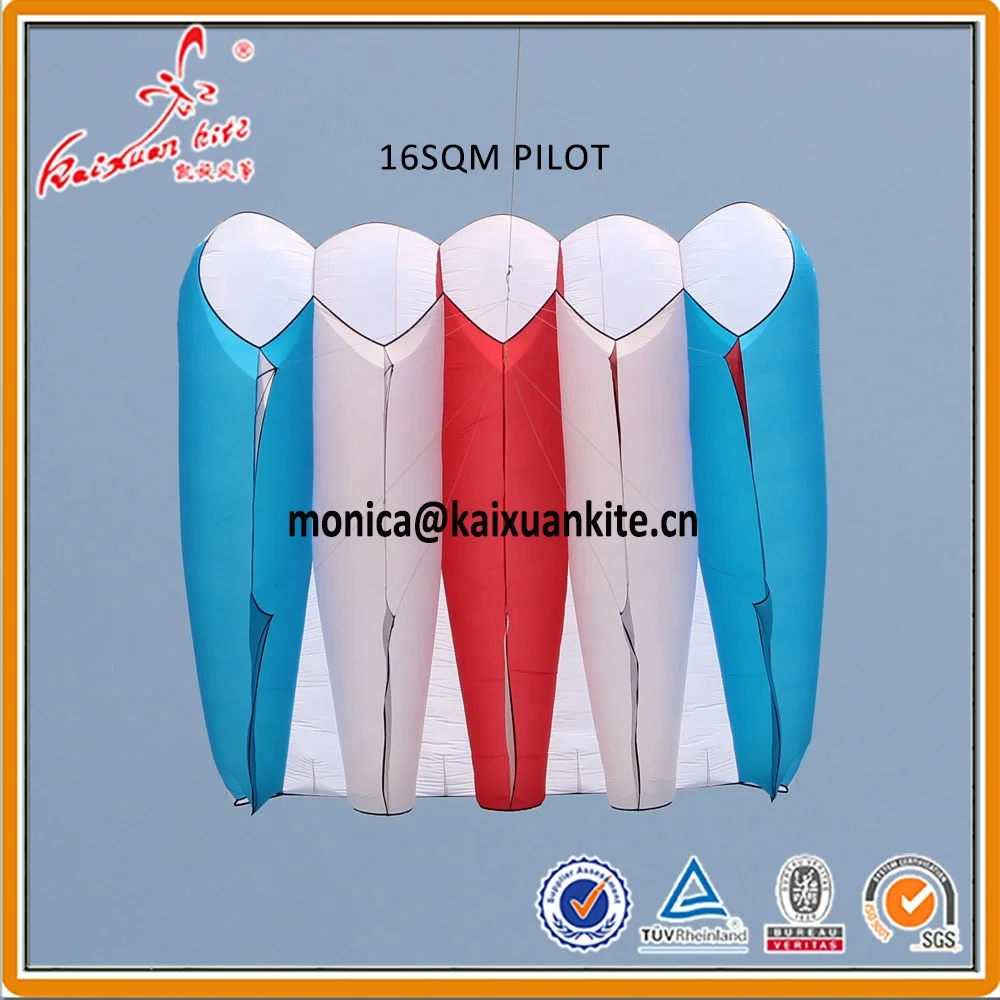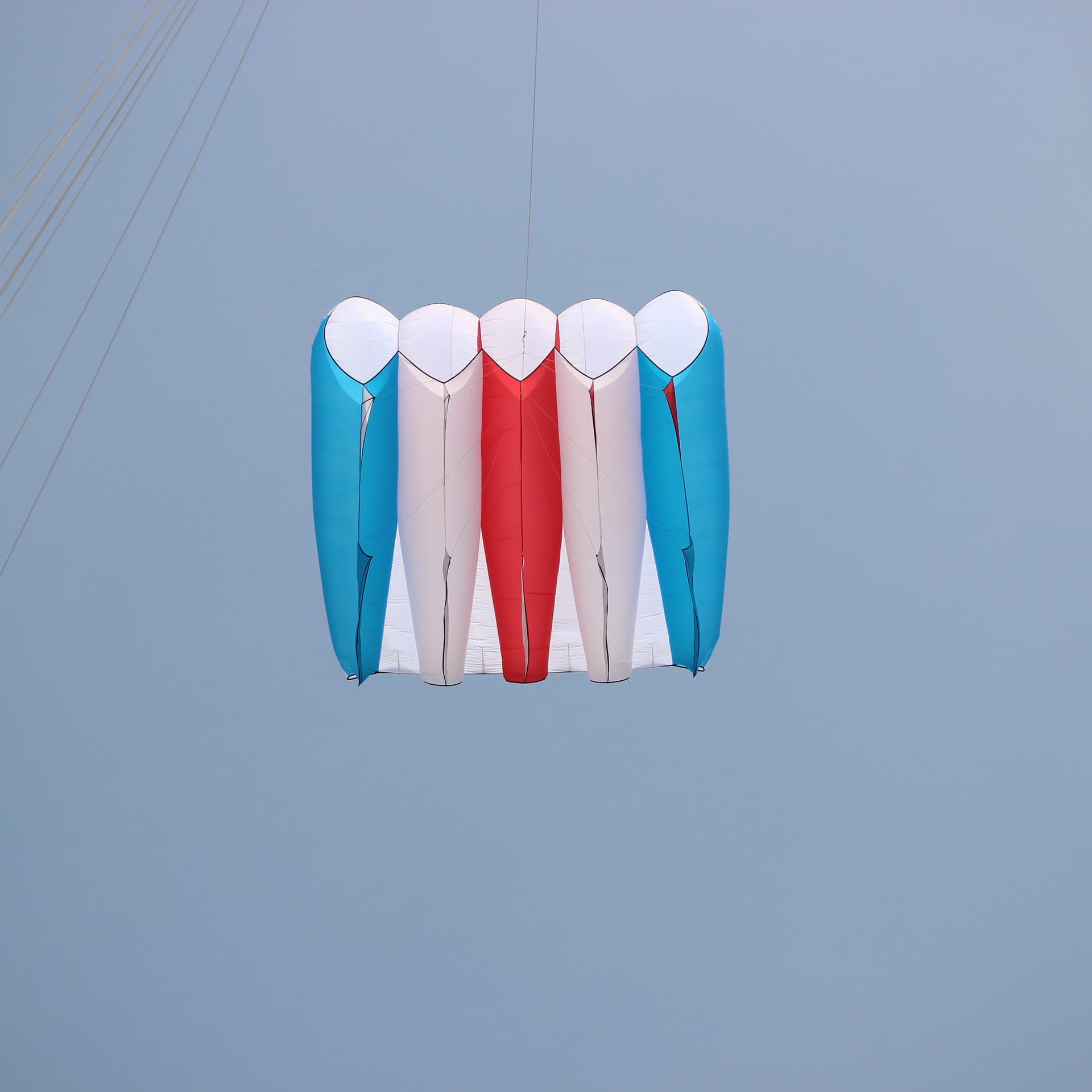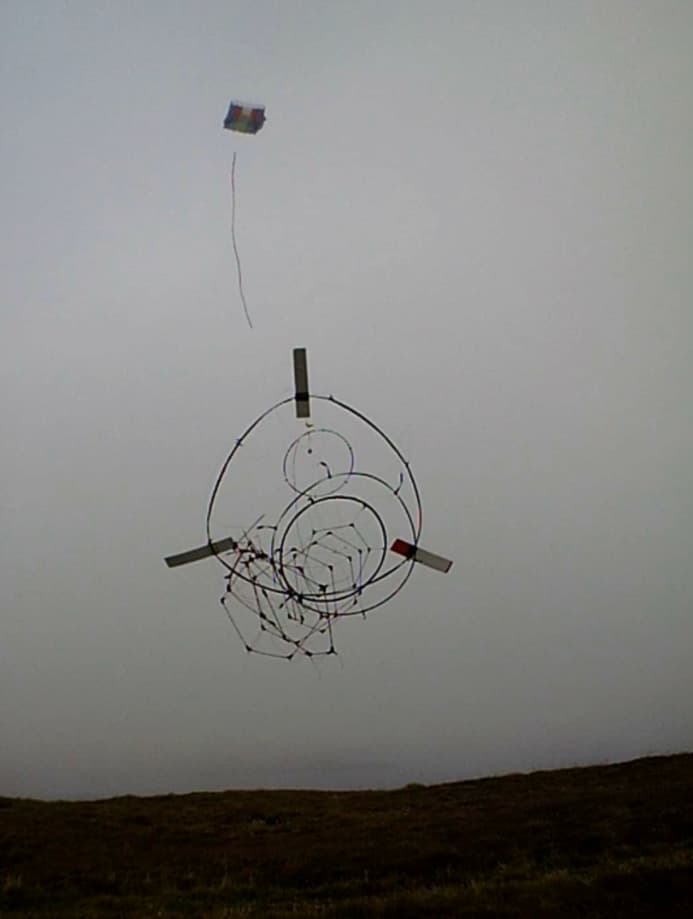Hi Rod - please tell me if my Daisy analysis is correct. When the wind gets too strong then the lifter kite should increase the tether angle so that cosine cubed losses reduce the power of the Daisy, rotation speed and stress on the cables. In contrast, when the wind is low, the lifter kite should lower the tether angle for maximum power. I believe you need a kite control unit for these purposes. If the wind suddenly dies, do you have enough time to stop rotation so that when the kite lands, the Daisy can rest on the ground? Will the cables entangle or operation resume when the kite is relaunched?
Hi @gordon_sp
Seems reasonable yes. We will also need a ground station controller to align the Power Take Off with the transmission.
A system working like you describe will limit the pull down drag from a simple rotor in strong wind when it pulls proportionately more than a static lifting kite.
(An active lifter could also be useful to keep the appropriate tension for the turbine whilst the turbine is held in low elevation angles in strong winds)
I prefer for now to have the lifter too strong and restrain the elevation with the backline.
I shouldn’t have launched that last test. The lifter was not strong enough (Only a 3m HQ KAP foil)
(Repaired turbine is now a 3 blade again, Hopefully flying again this week)
In the test the lifter clearly didn’t cope. That could happen again. Lulls happen.
For the 10kW project, We’ll test a backline handling system with a mast component to recover the turbine head and lift kite. The lifter will also have a control system
A mast I hear you scream… Defeats the purpose of AWES.
This is a lightweight mast used to prevent tip strike and assist launch of a kite stack. Yep it will need active controls
I have always liked your concept of using a mast and have even proposed the crazy idea of wobbling the mast from side to side to generate crosswind power.
Does this mean that you intend to use the mast for all wind conditions except when the wind gets too strong. In this case you detach the tether from the mast and raise the lifter kite to a high tether angle which will reduce the power of the Daisy, rotation speed and stress on the cables?
What about the elephant in the room - changes in wind direction?
For ease of implementation in proof -of -concept think mini digger more than static mast
The huge kite we bought from Alibaba should provide more than enough pull… 16 square m
«Youll never be underpowered again» ™️
What a beast
How does it handle?
We only flew it a few times. The last one we had trouble maintaining control of the tether tension, so I am not really allowed to play with it anymore.
It flies really well even in lower winds from what I have seen so far. I have no trouble recommending this kite.
One should note that the pull this thibg generates probably does put some strain on the tether attachment. Though it is a lot beefier than usual, I would be careful to put this thibg out in higher winds.
10 m/s, C_L 1.0 gives at least 100 kg tether pull, som make sure you have a strong winch for it
mid ping
If only the objective of this test yesterday had been
Test how much safer an AWES is with a backline
Pilot kite from kite factory for sale
Size: 10sqm
Sail: Durable Ripstop Nylon
Frame: NONE
On another place on the same page: size 3.6 x 2.8 m, that confirms 10 m² area. But on the photo below it is well 16 m². So, other dimensions in the same range?

They have many sizes if you contact them. I think the largest may have been 22 square meter.
A lifting kite flights by a high elevation angle, about 60 degrees, while the Daisy rotor remains at a far lower elevation angle, about 30-35 degrees. As a result the pull on the rotor is not symmetrical, making it subject to undesirable variations of elevation angle by a sort of pendulum effect. I wonder if these problems could be solved by using a “bad” lifting kite (a parachute?) flying by a lower elevation angle, rotor and kite being aligned, the kite pulling still stronger in addition, by combining stronger drag and lift.
You are correct @PierreB
A stable lift kite with plenty of line tension pull is our preferred tool.
A high lift angle is unnecessary - watsefull even - especially as the elevation of the turbine is limited by the backline.
The backline ties the head of the turbine to the ground - This limits how high a lift line can pull the turbine head.
So in effect as long as we have a strong enough lifter we should have enough tension in the turbine to start TRPT. . . all extra axial line tension from the lifter contributed toward the capability of the transmission set … more axial tension makes the TRPT more torsionally rigid
So, yet again I made the mistake in operation yesterday.
It’s quite amazing in the videos and data… I managed to get the PTO to run backwards very briefly.
Any ideas how…?
Obviously the operational models of rotary AWES need much better definition - higher fidelity - accurate descriptions.
After launch, the rotor was in place and rotating… slowly. ( As per @Ollie Ollies stall modelling)
So I decided to try hand start full speed rotation by turning the PTO… didn’t work
So I decided to emergency forward drive the PTO forward… worked but
Maybe I should have held the button on longer
In driving the PTO forward I reversed the transmission coil direction.
If I had held the drive forward button on until the rotor had overtaken the PTO (The PTO max output speed is limited in the VESC) The Transmission coil winding would have been the correct chirality.
Instead I let go too early and we saw the crazy situation of the rotor spinning up really fast while it’s tension temporarily drove the PTO and generator backwards
Once the drive lines caught up we had the perfect storm of PTO inertia in the wrong direction VS unloaded top speed rotor… The transmission endured a couple of shocks and shakes before being crushed.
Oddly another issue on knot jointing 2 transmission sections meant the tensile load of the high speed rotor bumping axially burst the knots through… wow that’s why it popped away just after the crush.
Definitely well beyond time that these dynamics were studied more closely
We have a few ideas on how to integrate new sensors and control methods into the devices if anyone wants to join us in a research project funding call or two
Thanks for sharing.
Controlling the torsion in the tube is vital. For our wind catcher we eventually decided to have two moment transfer lines for each blade to account for both positive and negative moment transfer - such that we would avoid such oscillations. Obviously this comes at a significant drag penality.
Curious if you or anyone figure out a method of solving this. Perhaps some fancy state estimation is necessary or dumb slow/steady control?
I think measuring the blade phase at ms precision may allow you to get the control of shaft to blade so tight that these will be non issues. If so this is a question of instrumentation foremost.
Also reduce mass in shaft as much as possible. In particular that givibg rotational moment of inertia. (Speaking as someone with little actual experience)
Exactly the plan
We’ll be experimenting with using IMU and RTK GPS data from the rotor and various load cells to govern the rotational lag in the PTO wheel.
Our IMU data is coming in over wifi at 1kHz like you said. Not yet put it out on a rotor. Just have to start plugging more bits together which work faster than my old eyes, fingers and elbows control system
If anyone wants to see me crash a kite turbine in about 10 seconds on tv
Near the end of
Mac ’S Uaine/MacSween Goes Green: www.bbc.co.uk/iplayer/episode/m00116hr via @bbciplayer
Unfortunately geolocked.
Hey, just want to ask a few questions if you don’t mind?
I’ve seen the designs think it’s awesome. I was just wondering if it was at all possible for it to generate electricity in multiple ways? As my thinking is the blade ring are hollow which mean a magneto fluid could spin freely inside a tube. Which in turn could directly generate electricity from the spinning kites. Then be transmitted down the tethering cable. It just a question of how big a kite would you need to lift the array into The air? From what I can figure out you have four ways thing could generate electricity? From atmospheric electricity, static electricity from blades rotation, a group and ground based generator. and from hollow blade rings filled with magneto fluid. I’m not sure how cost effective this would be? I have no idea if it would work? I just wondered if that something that could be done as a mod? Or if it would improve viability? I love the simplicity of the design and wondered if it would end possible to get more out of it? Ive seen the original design and think that if the kite had reinforced outer rings it would be less likely to buckle. I’ve seen a lot of peoples pointers On this thread and think it’s definitely room for improvements. I definitely think there’s a wide range of application. Both terrestrial and ocean based. Any suggestions or pointers?


